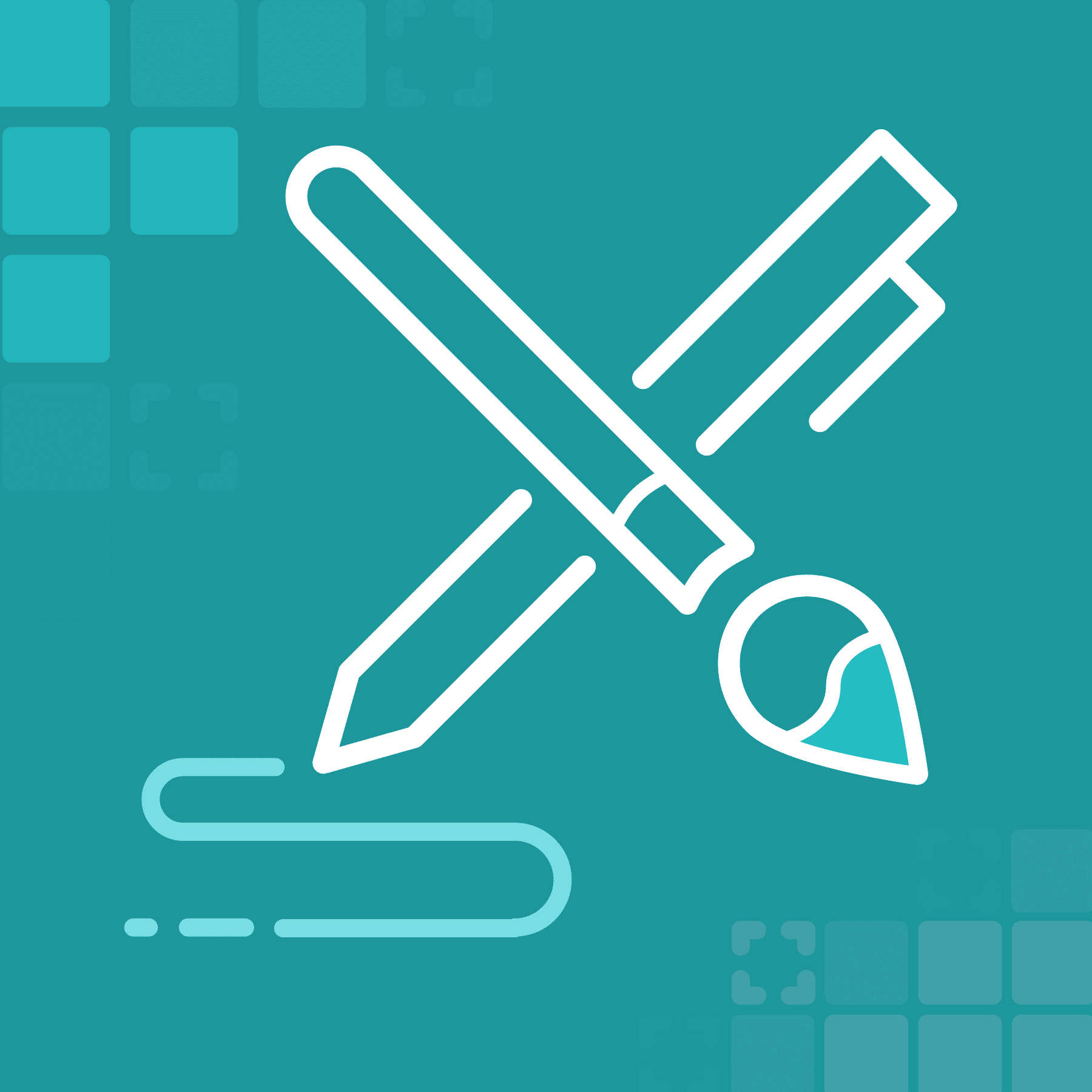This guest blog post was written by Dr. David Marshall, a technical writer and a training developer since 2007. He is also the owner of Neithdos Consulting Services LLC. Dr. Marshall received his DM in Executive Leadership from Colorado Technical University in 2021.
According to an article from the Jane Friedman website, a person that is writing constantly and consistently is a writer. So why is this important? In our field we are constantly putting pen to paper, or in today’s age, fingers to keyboard and mouse to create amazing documents for our customers.
These incredible products are developed by writers that want to create quality content for their customers and organizations. Here is a small list of content that writers have created:
- Academic Writing
- Blogs
- Book Writing
- Columnist
- Copywriting
- Email Marketing
- Journalist
- Long Form Content
- Novelist
- Screenwriter
- Social Media
- Travel Writer
- Video Scripts
Being a writer can be rewarding especially to those who like to take control of their lives, focus on self-development, and make a difference in the world.
So, who are these writers? What kind of writing jobs do they take on? Here is a sample:
- Blog writing – A very popular way to produce content online.
- Social Media – A great place to make your and the organization’s presence known.
- Copywriting – Writing content for marketing purposes. Great experience working with advertising and marketing.
- Academic Writing – Essays, dissertations, research papers.
- Video Scripts – These scripts are used by presenters especially on YouTube to promote a product, brand, or service.
In this blog, we are going to concentrate on technical writing, what a technical writer does on a day-by-day basis, the different types of technical documentation, and how to become successful as a technical writer.
What is Technical Writing?
Technical writing is a field that involves creating documents to convey complex information from developers to customers. According to the traditional definition, technical writing involves creating documents specifically for professional audiences, such as research papers, programming guidelines, and repair manuals. However, the field has expanded to include all types of documentation, including technical reports, executive summaries, and briefs.
A technical writer is responsible for simplifying complex information into an easy-to-understand format, using a variety of tools such as images, videos, and step-by-step instructions. The goal is to create documentation that provides clear direction and instructions to users, enabling them to learn, understand, and use a product or service without complications. Organizations often enhance their capability by partnering with technical content writing services, ensuring high-quality and comprehensible documentation.
Whether it's a user manual, an installation guide, or a troubleshooting document, technical writing requires precision, attention to detail, and a deep understanding of the subject matter. A skilled technical writer can take highly technical information and translate it into a format that is accessible and understandable to a wide audience.
Technical Writing Principles
There are principles technical writers follow when developing documentation. These principles include:
- Quality of the content
- Audience
- Purpose
- Accessibility
- Grammar
- Writing style
Rules to Follow to be Successful
Being a good technical writer requires more than just writing skill. You must possess excellent communication skills and be able to convey complex concepts in a clear and concise manner. When preparing a technical document, it is important to keep several key factors in mind.
Firstly, make sure that you have a complete understanding of all the facts and details related to the topic. This will enable you to plan and structure the document effectively. When doing so, it is crucial to keep the end user in mind and consider how they will interact with the document.
Using graphics can be an effective way to enhance understanding and engagement, but it is important to use them appropriately and sparingly. Additionally, using simple language and avoiding jargon will help ensure that the document is accessible to a wide range of audiences.
Although technical writing is not typically associated with creative writing, it is still important to make the document exciting and engaging. This can be achieved by sticking to a technical subject, having a clear purpose, conveying solid information and data, maintaining an objective tone, staying concise, and maintaining direction.
Finally, it is important to properly cite any contributors or sources of information used in the document. By following these guidelines, you can create effective technical documentation that conveys complex concepts in a clear and concise manner.
Industries Supported
Technical Writers support a number of industries such as:
- IT
- Engineering
- Software
- Heavy Machinery
- Aerospace/Aviation
- Electronic
- Healthcare
- Education
Types of Technical Writing Documentation
Technical writing encompasses various types of documentation that help users understand and operate a product or service. Technical writers use their expertise to create clear, concise, and easy-to-understand documentation that helps users utilize a product without difficulty. There are different types of technical writing documentation, which include:
- End User Documentation: This type of documentation helps customers understand and use a product by breaking down technical terms into easy-to-understand content. Examples of end user documents include user help guides, product manuals, assembly guidelines, and technical books.
- Medical Documentation: This type of writing pertains to medical research, diagnosis, and treatment. Medical documentation needs to be accurate, organized, and detailed, using the best-in-class medical documentation software. These documents are used by practitioners as a learning resource to understand procedures and results.
- Traditional Documentation: Technical writers develop these documents for experts in the field the document is about. These documents include software user manuals, how-to instructions, operation and maintenance manuals, and standard operating procedures.
- Case Studies: These studies are used to show how a particular product helps a business. The organization will write how this product or service was a great benefit that helped the company reach its business goals. Examples of case studies include testimonials or customer reviews.
Technical Writer Mistakes to Avoid
As a technical writer, it is essential to try to avoid these tech writing mistakes when creating technical documents. These mistakes include:
- Poorly defined topic
- Lengthy sentences and big words
- Scattered page layout
- Inadequate content
- Inconsistent tone
Top Technical Writing Tools
There are a number of software tools a technical writer will use to develop for the customer. These tools assist in writing, editing, drawing, reviewing, and rewriting. A sample list of the tools available include:
- Google Docs
- Google Docs is being used more and more to collaborate on documents through the mobile phone.
- Snagit
- A screen capture and screen recording software that can be used for giving feedback, training, or just showing others how to do a task.
- Visio
- Microsoft Visio is used to create design flowcharts, architectural diagrams, software product design, circuits, etc. The software is IEEE compliant and conforms with software industry standards such as UML (Unified Modeling Language) and BPMN (Business Process Model and Notation).
- Photoshop
- A very popular image editing tool that creates and edits images for web pages, banner ads, and video graphics.
- MadCap Flare
- MadCap Flare is used to streamline document creation and learning & development programs. One of the favorite topic-based authoring tools for technical writers. Interested in a technical writing software trial? Start your 30-day trial of MadCap Flare today and streamline your content creation process.
- Adobe Framemaker
- Used to generate structured documents with an XML framework that is 100% DITA compliant.
- Wordpress
- This software is used to create technical documentation in blog form. Blogs written on Wordpress can be integrated into the company website.
How to become a Technical Writer
Some examples of technical fields that may require technical writing skills include computer applications, electronics, medical concepts and procedures, and hardware specifications that often involve DITA technical writing. In order to produce accurate and comprehensive information about these subjects, technical writers may need to consult with subject matter experts or conduct extensive research.
If you are interested in pursuing a career in technical writing, it is important to develop strong technical writing skills. You may want to consider taking a technical writing course or seeking out opportunities to gain experience creating technical documents. With the right combination of skills and expertise, technical writers can play a critical role in ensuring that complex technical information is accessible and understandable to a wide range of audiences.
Summary
Being a tech writer can be very rewarding and since there are so many opportunities to choose from, it should be easy to choose the field that will be a great opportunity to display your talents.
Technical writing is one of those fields that creators can get into to produce amazing products for customers and organizations. These outstanding products are beneficial to the user so that they can understand the complex information and use the product or service efficiently.
References
What it Means to be a Writer – and to Emerge as a Writer by Albert Flynn DeSilver – October 9, 2017
17 Awesome Technical Writing Tools for Documenting Information by Whatfix – November 6, 2019
Types of Technical Writing: What the Various Types of Technical Writing Men by Outranking – January 1, 2022
What are the different types of Technical Writing by Collabera – 2019
What is Technical Writing? By Kara Latz – June 10, 2022













